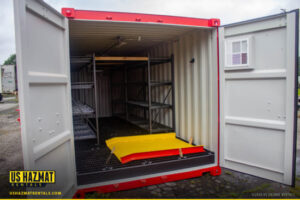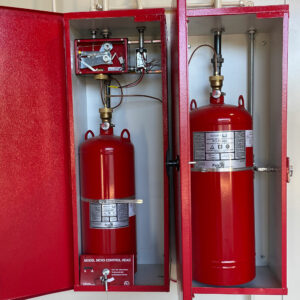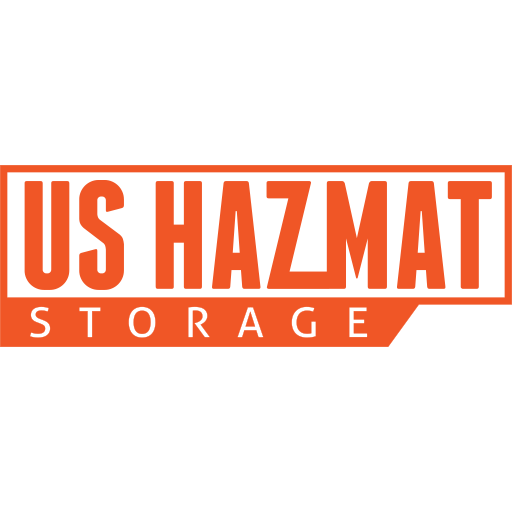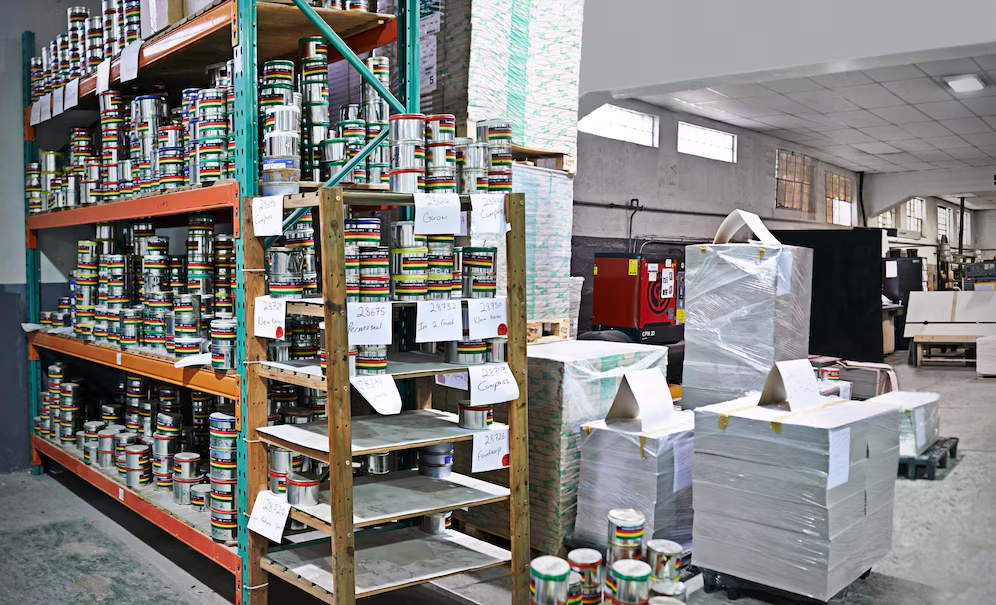Safe paint storage prevents messes and dangerous spills from threatening the automotive, aerospace, construction, and industrial manufacturing sectors. Although paints can restore any drab interior or facade to brilliant and vibrant prominence, oil based paints are flammable solvents. Moreover, most paints contain toxic pigments and compounds hazardous to health and the environment. Unsecured, negligent paint storage leads to damaged property, pollution, and product degradation. OSHA Standard 1926.152 limits paint storage in a single area to 60 gallons. Companies must store greater quantities in a fire-rated chemical storage warehouse for flammable liquids. Our turnkey, rapidly-deployable chemical storage lockers safely maintain onsite paint stockpiles away from incompatible materials with standard innovative safety options that prevent spills from reaching the nearby environment. Optional fire suppression and climate control upgrades maintain chemical consistency while preventing inadvertent fires from spreading with insulated and fire-rated construction behind solid-sheet paneling and fire-resistant composite materials.

How Flammable is Paint?
Most paints are combustible liquids with a flashpoint greater than 100 degrees. Highly flammable substances and paints require superior steel-gauge protection. Solvent based paints have strict storage requirements, necessitating turnkey protection, like our highly-rated NFPA 30 compliant paint storage warehouses. Consulting the manufacturer provided Material Safety Data Sheet for each paint type ensures comprehensive onsite protection. Our fire-rated safe paint storage warehouses safely protect multiple flammable classifications with flashpoints ranging from 73.4 degrees F to 199.4 F.
How to Store Paint Safely?

Project managers should always store paint canisters in a cool and dry environment away from sunlight between the application and manufacturing stages. Passive and optional mechanical ventilation, performing six air exchanges per hour, prevents paints from becoming gloppy or gelatinous while in-house high-BTU heaters prevents onsite freezing. Stacked paint can pallets should be durable and evenly distribute loads. Never stack pallets beyond recommend capacities and maintain adequate walkways and overhead within certified safe paint storage warehouses. Our fire-rated and non fire-rated chemical storage lockers come equipped with optional and customized wide-swinging and roll-up doors for easy removal by forklift or hand-truck.
What are the OSHA Standards for Storing Paint?

OSHA paint storage requirements stress automatic fire suppression systems for storing large paint quantities. Our remote activate overhead fire suppressions allow for remote activation during high heat ratings. OSHA also recommends mechanical ventilation, which comes standard on all US Hazmat chemical warehouses, for maintaining optimal passive airflows. Clutter is a primary detriment and barrier to compliant and safe paint storage. Moreover, OSHA says companies must maintain a three-feet wide area for safe egress and exit from paint storage warehouses. Our hazmat lockers give companies ample paint storage square footage with room to expand for growing inventories.
What are the Storage Requirements for Paint?
Employees should never store paint with incompatible materials, like certain plastics, plasticizers, corrosive materials, and flammable liquids. Furthermore, centralized storage engenders keen product management and inventorying. Inventory managers should also properly label paint canisters and drums for streamlined storage. Routine paint can and drum inspections also prevents compromised canisters from spilling. Onsite safety managers should have readily-available Material Safety Data Sheets for quick paint reference. An MSDS includes important product information, like boiling and melting points, storage guidelines, first-aid measures, and the corresponding fire suppressant for all water soluble and oil-based paints.
What are the Recommendations for Paint Storage?
Employees and staff should always store paint in a climate controlled environment between 60 and 80 degrees Fahrenheit. Staff dispensing staff should immediately close paint canister lids after distribution. IBC totes streamline paint storage for large-scale application and industrial use. These totes are more durable than smaller canister storage and ideal for storing large quantities. Moreover, IBC totes are DOT certified, making them the ideal transport choice for paints and coatings.
Is Water-Based Paint a Fire Hazard?
Although water-based paints aren’t flammable and therefore not subject to regulation, securing onsite safe paint storage helps site organization. Five gallon acrylic paints range from $100 to $500 per container. Safely storing large stockpiles behind a lockable chemical storage locker streamlines operations while protecting paints from thieves and moisture permeation. Unprotected paint storage on site increases the propensity for massive spills that permanently stain jobsites while draining massive resources for clean-up.


